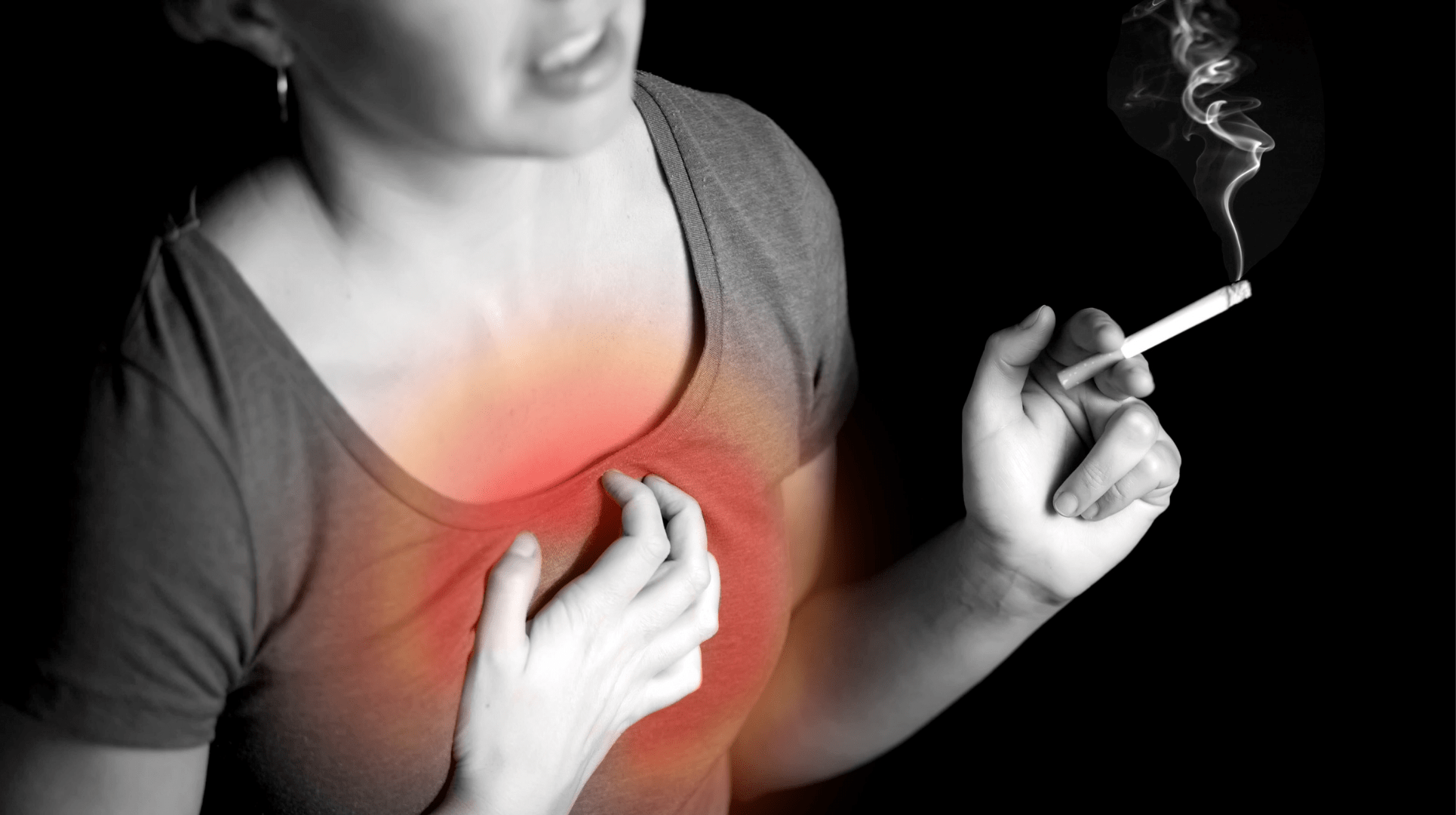
Can this terpene prevent damage from nicotine?
Nicotine promotes concentration and unfortunately cardiovascular stress. A recent study found that a terpene known as beta-caryophyllene prevents aortic damage from nicotine. And it did so by activating a cannabinoid receptor. Nature offers solutions, but that doesn’t necessarily mean you should roll a spliff.
The study exposed mice to vaporized nicotine. (1) Researchers sacrificed the rodents to analyze the aortic wall after steam sessions because it is unethical to sacrifice humans. But further research may confirm the current findings.
Aortic Health
The aorta is the largest artery and its wall consists of three layers. The aorta is located behind the heart in the shape of a cane and supplies oxygen-rich blood to the entire body. But a weakened aorta can balloon in the chest and cause an aneurysm, or worse, a rupture or dissection.
- Stable side effects: shortness of breath, back or abdominal pain, difficulty swallowing and hoarseness.
- Rupture Side Effects: Chest tearing, back pain, difficulty walking/talking, and dizziness.
addiction therapy
Nicotine and b-caryophyllene have been featured in previous addiction studies, including a study by the National Institute on Drug Abuse in Maryland, USA. Nicotine is addictive because it selectively torments ACH receptors. To counteract this, vaporized beta-caryophyllene uses CB2 receptors to break down dopamine in the reward pathway. (2)
Nicotine selectively takes up acetylcholine, which releases dopamine and drives the reward response — the catch that grabs people. In contrast, CB2 receptor agonists, including caryophyllene, inhibit midbrain dopamine receptors. Beta-caryophyllene therefore helps remove the nicotine hook.
risk versus reward
Tobacco (Nicotiana) is still a traditional and spiritual medicine native to America. (3) Regardless, claims that nicotine is non-toxic ignore risk and reward. (4) The harms of smoking are evident as the CDC found tobacco smoking to be the leading cause of preventable deaths in 2021.
However, one study found a reduction in Alzheimer’s disease in smokers compared to non-smokers. Nicotine probably reduces the risk of Alzheimer’s and Parkinson’s disease by eliminating plaque in the brain, or more specifically beta-amyloid proteins. But the reduction is not dramatic and comes with other side effects. (5)
Nicotine – first isolated in 1828 (6) – is physically addictive and, depending on absorption, can be fatal in doses over 500 milligrams. (7) Additionally, it can stress the aortic wall by inducing an enzyme known as MMP-2. (8) Research from Japan – analyzing the role of beta-caryophyllene – confirmed the role of nicotine on MMP-2 from a previous study. (1)
 Nicotine induces reactive oxygen species (ROS) that torment MMP-2 enzymes and weaken the aorta. But the cannabinoid receptor agonist beta-caryophyllene inhibits reactive oxygen species and prevents damage caused by MMP-2.
Nicotine induces reactive oxygen species (ROS) that torment MMP-2 enzymes and weaken the aorta. But the cannabinoid receptor agonist beta-caryophyllene inhibits reactive oxygen species and prevents damage caused by MMP-2.
prevent aortic damage
It turns out that beta-caryophyllene inhibits arterial wall damage by inhibiting MMP-2 (matrix metalloproteinase-2). However, the terpene is dependent on (mouse) CB2 receptors to reduce enzyme and aortic damage caused by nicotine. Mice treated with beta-caryophyllene and nicotine vapor were less prone to arterial rupture compared to mice given nicotine alone.
Beta-caryophyllene had no effect on arterial wall thickness, although it reduced the risk of rupture. Instead, the terpene dampened a reduction in elasticity. The researchers used gas mass spectrometry to determine beta-caryophyllene levels in aortic tissue after killing the mice. Their results confirm that terpenes saturate blood and arterial tissue.
Smoking, but also vaping nicotine, induces reactive oxygen species (ROS). And MMP-2 – the enzyme that weakens the aorta – is released by reactive oxygen species. In contrast, cannabinoids are powerful antioxidants. Cannabinoid receptor agonists, including the terpene beta-caryophyllene, suppress ROS, which prevents nicotine-induced aortic damage.
Beyond reactive species and enzymes, nicotine interferes with specific metabolic processes. And CB2 receptor agonists regulate the same mechanisms.
Body weight and water intake, which were lower in the nicotine group, were also unaffected by caryophyllene vapor. However, the terpene restored a nicotine-induced drop in glucose. Interestingly, vitamin B3 activates similar parts of the ACH receptor as nicotine, but with some key differences. Keep in mind that vitamin B3 — also known as nicotinic acid — causes redness and tingling, and is even toxic in extreme doses.
One more reminder – terpene vapor shouldn’t contain any toxins. But burning aromatic hydrocarbons, particularly the terpene limonene, can release toxins that are more damaging than pure nicotine.
Sources
- Inhaled volatile β-caryophyllene is incorporated into the aortic wall and attenuates nicotine-induced aortic degeneration via a CB2 receptor-dependent pathway. Biomedicine & Pharmacotherapy. 2022;153:113423.
- He Y, Galaj E, Bi GH, Wang XF, Gardner E, Xi ZX. β-Caryophyllene, a dietary terpenoid, inhibits nicotine uptake and nicotine seeking in rodents. Br J Pharmacol. 2020;177(9):2058-2072. doi:10.1111/bph.14969
- Pollan, M. 2022. How to Change Your Mind. Episode 1. Netflix.
- Risk*
- van Duijn CM, Hofman A. Relationship between nicotine intake and Alzheimer’s disease. BMJ 1991;302(6791):1491-1494. doi:10.1136/bmj.302.6791.1491
- Posselt W, Reimann L. Chemical investigations of tobacco and presentation of the peculiar effective principle of this plant. Geiger’s Magazine of Pharmacy 1828;24:138-61
- Mayer B. How Much Nicotine Kills a Human? The traceability of the generally accepted lethal dose to dubious self-experiments in the 19th century. Arch Toxicol. 2014;88(1):5-7. doi:10.1007/s00204-013-1127-0
- Wang S, Zhang C, Zhang M et al. Activation of AMP-activated protein kinase α2 by nicotine induces abdominal aortic aneurysm formation in mice in vivo. Nat Med 18, 902-910 (2012).

Post a comment: